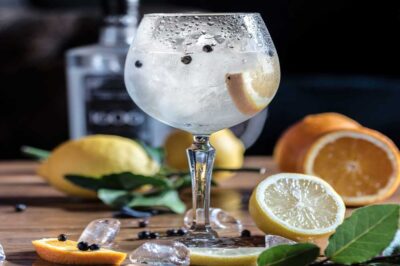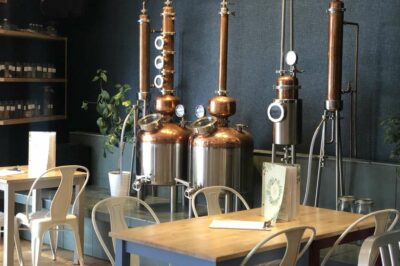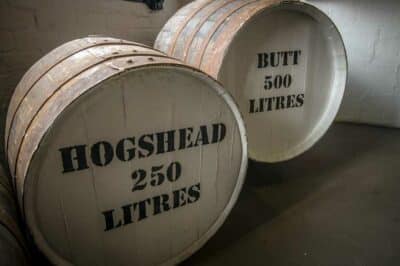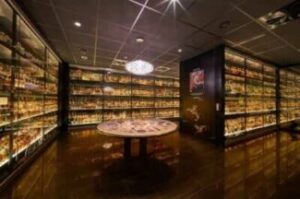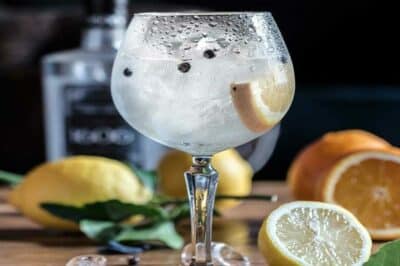
Is Edinburgh well known for gin?
Today, the business of gin in Edinburgh is booming. With innovative distilleries, specialist bars and an abundance of gin experiences, lovers of this popular drink are spoilt for choice.
The city boasts a number of distilleries, each with its unique take on traditional recipes. From classic London Dry Gin to experimental, botanical infusions, there’s one to suit every palate.
The opening of the Lind and Lime Distillery in Leith and Edinburgh Gin’s new home in the city’s Old Town is testament to this exciting renaissance which has captivated both locals and visitors.
To fully immerse yourself in Edinburgh’s gin culture, consider joining a tasting tour. These guided experiences offer the opportunity to sample a variety of gins, learn about the distilling process, and discover the history behind each spirit.
After the tour, head to one of the capital’s gin bars to enjoy some exquisite, occasionally experimental, cocktails using locally produced spirit.
Whether you’re a connoisseur or simply looking to try something new, Edinburgh’s vibrant gin scene has something to offer everyone.
The history of gin in Edinburgh
While the city has a well-deserved reputation for whisky distilling there is also a long and less well-known history of gin distilling in Edinburgh.
During the 18th century, jenever (genever), described as the Dutch version of the spirit, was traded in Leith, the port of Edinburgh.
The Netherlands, one of Scotland’s most important trading partners at the time, had a huge influence on Edinburgh’s gin production
Unsurprisingly, at that time, a number, perhaps only seven or eight, licensed Edinburgh gin distilleries alongside a multitude (possibly as many as 400) of unlicensed stills were operating.
The first purpose build gin distillery in Edinburgh was probably the Lochrin Distillery built by James Haig in 1780. Historic Environment Scotland (Canmore) notes that the distillery shows on the John Ainslie map of 1804.
During the 19th century, production reached its peak. In 1826 Robert Stein, a member of a famous Edinburgh gin-making family invented the column still that would improve production.
His method of ‘continuous distillation’ increased the amount of potable spirit that could be produced. His design was further improved by Aeneas Coffey in 1831.
Coffey was a fascinating character. The Dictionary of Irish Biography says more about him.
Despite the advances in technology by the middle of the 1970s, there were no gin distilleries in Edinburgh.
For those that like to add tonic, consider the information (below) from Historic Environment Scotland.
“In the 1700s, Edinburgh-born doctor, George Cleghorn, discovered quinine could be used to prevent malaria. It had a bitter taste, but the addition of water, lime, sugar and – crucially – gin made it far more palatable, leading to the birth of the G&T.
Historic Environment Scotland
By 1777, the first ‘gin craze’ had begun and the Scottish capital was right at the heart of it.”
What is gin?
Gin is a distilled alcoholic beverage that derives its predominant flavour from juniper berries which rather confusingly are not berries in the true sense of the word.
Botanically speaking, they are female seed cones which come from various species of junipers.
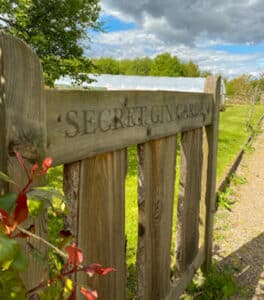
It’s typically clear and transparent, although some variations may have a slight golden or amber hue if they have been aged or infused with botanicals.
The production involves the distillation of neutral spirits with juniper berries and a variety of other natural ingredients.
While juniper is the primary flavouring ingredient, other commonly used plant-based-elements include coriander, angelica root, citrus peels, cinnamon and cardamom, to name only a few.
Not only do they contribute to the complex flavour profile and aroma of the spirit they give a creative master distiller endless possibilities for exploration.
As gin continues to gain popularity, we can expect to see even more innovative and experimental botanical combinations.
There are different styles of this much loved drink, each with its own characteristics. Among them are:
London Dry Gin: This style is known for its dry and crisp taste. Despite the name, it can be produced anywhere, not just in London. It is typically juniper-forward and does not contain any added sweeteners after distillation.
Plymouth Gin: Originating from the city of Plymouth in England, this style has a slightly sweeter and earthier flavour compared to London Dry.
Old Tom Gin: This style is a slightly sweeter and more aromatic variation. It was popular during the 18th and 19th centuries and is experiencing a revival in recent years.
New Western or Contemporary Gin: This style encompasses a broader range of gins that deviate from the traditional juniper-forward profile. New Western versions may emphasise other botanicals and offer more diverse flavour profiles.
It’s a versatile spirit used in a wide range of cocktails, including the classic Gin and Tonic, Martini, Negroni, and Tom Collins, among many others. Its distinct flavours make it a popular choice among cocktail enthusiasts.
Craft gin
The term craft gin is a well-used description by distillers and gin enthusiasts , but what is it?
The term generally refers to a type of spirit that is produced in small batches by independent distilleries, often with only a small team overseeing the operation. But, in the process, using traditional methods and high-quality ingredients.
Craft gin distillers focus on creating unique and artisanal flavours by carefully selecting botanicals and employing various distillation techniques.
Unlike mass-produced spirit, bespoke gins are often handcrafted and may have a more distinct and complex flavour profile.
Distillers may source locally grown or foraged ingredients whenever possible to create unique regional expressions of the drink.
Craft gin has gained popularity in recent years as consumers have shown an increasing interest in artisanal spirits.
This trend has led to the emergence of numerous craft gin distilleries in Edinburgh, each with its own signature style and flavour profiles.
However, there are some concerns from small distillers that the word craft has become so overused in the drinks industry, becoming in the process, relatively meaningless.
More about gin in Edinburgh
More information about Scottish Gin
The Scottish Gins: A to Z Directory is a great resource for anybody looking for more information about gin in Edinburgh and throughout Scotland.
- Go to the official website of the Gin Cooperative to find out more.
“We define a ‘Scottish Gin’ as a quality, premium spirit distilled, rectified, or cold compounded in Scotland.”
The Gin Cooperative
Learning more about gin
For most people, learning more about this popular drink is a relaxed and enjoyable experience.
The process often starts in one of a number of places in Edinburgh and throughout Scotland that offer distillery tours and tastings.
For a more formal approach to learning more about it, the Edinburgh Whisky Academy also offers a Certificate in Gin course.
In addition, the aforementioned Gin Cooperative and the Scottish Gin Society are both excellent sources of information.
